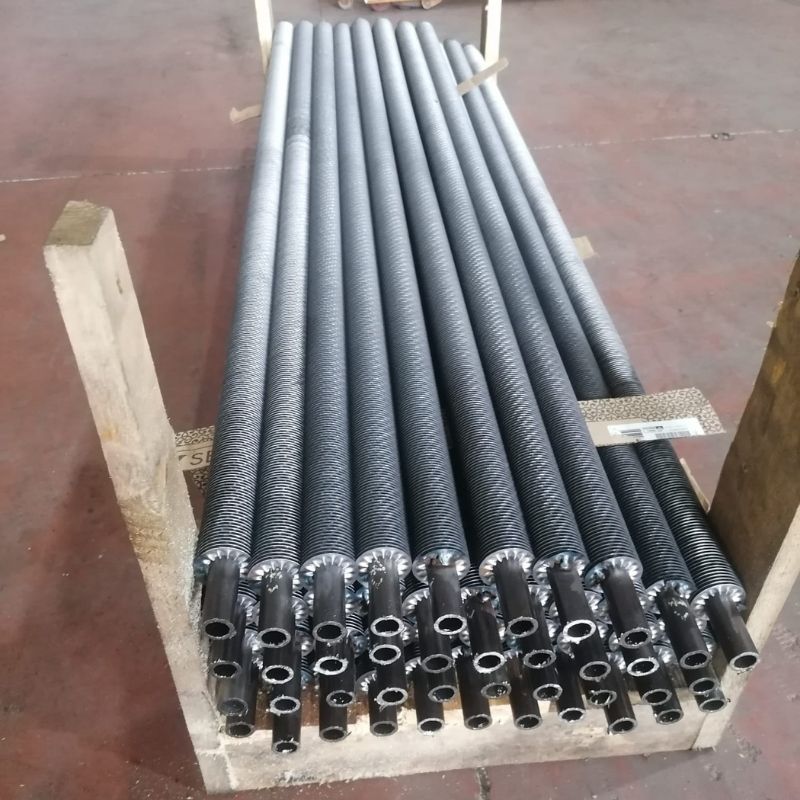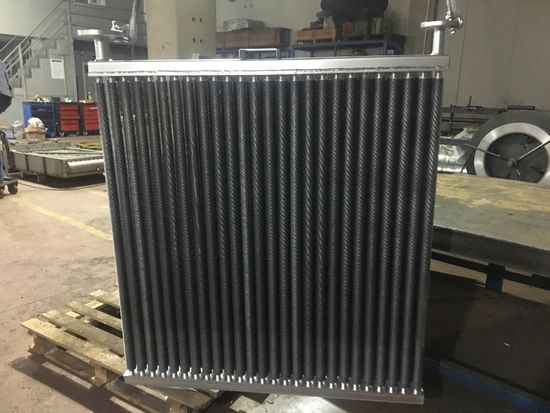Effective steam radiators designed by Erk Proses for industrial steam applications. Meet your needs with high performance and durable solutions.
A steam radiator is a type of heat transfer device commonly used in heating systems. These radiators transfer heat by heating the air in the environment through using the energy of steam. A Steam radiators are especially utilized in places such as large buildings, industrial plants, and power plants to meet heating needs. The finned pipes used in steam radiators are special pipes designed to increase heat transfer. These fins, also known as wings, increase the surface area of the radiator and thus, they allow more heat to be transferred.
The impact of finned pipes on heat transfer occurs in several ways:
- Increased Surface Area: Finned pipes have a larger surface area compared to plain pipes. Fins are extra surfaces surrounding the pipes. This additional surface area contributes to increase in heat transfer by facilitating the transfer of more heat to the environment.
- Turbulence Creation: The fins on the finned pipes disrupt the flow of the fluid (steam). These fins create turbulence by disrupting the flow of the fluid. Turbulence increases heat transfer by ensuring more effective heat exchange.
- Thermal Conductivity: Finned pipes are often made from materials with high thermal conductivity. This facilitates quicker and more efficient heat transfer. The steam passing through the finned pipes heats up or cools down faster due to the thermal conductivity of the pipe walls, thereby increasing heat transfer efficiency.


Several important factors need to be considered in the design of steam radiators:
- Heating Requirement: The heating requirement of the relevant space or building should be accurately determined. This involves considering factors like size of the area, its intended use, and building's insulation.
- Efficiency: Proper sizing and placement of steam radiators are vital to ensure maximum heat transfer and energy efficiency. Design and positioning factors should be taken into account for optimal efficiency.
- Pressure and Temperature: Steam radiators operate within specific pressure and temperature ranges. During the design phase, these parameters should be considered, and suitable devices should be selected.
- Material and Durability: Steam radiators must be made from durable materials that can be resistant to high temperatures and pressures. Proper material selection ensures the radiators' longevity and smooth operation.
Steam radiators are commonly used in energy, construction, and industrial sectors. They are particularly integrated into heating systems in large buildings, hospitals, hotels, office complexes, schools, and factories. Moreover, steam radiators play an important role in steam turbine power generation for energy production.
For more detailed information about steam radiators or to request a quote, you can contact us via the WhatsApp support line, our contact numbers, or by the quote request form available on our website.